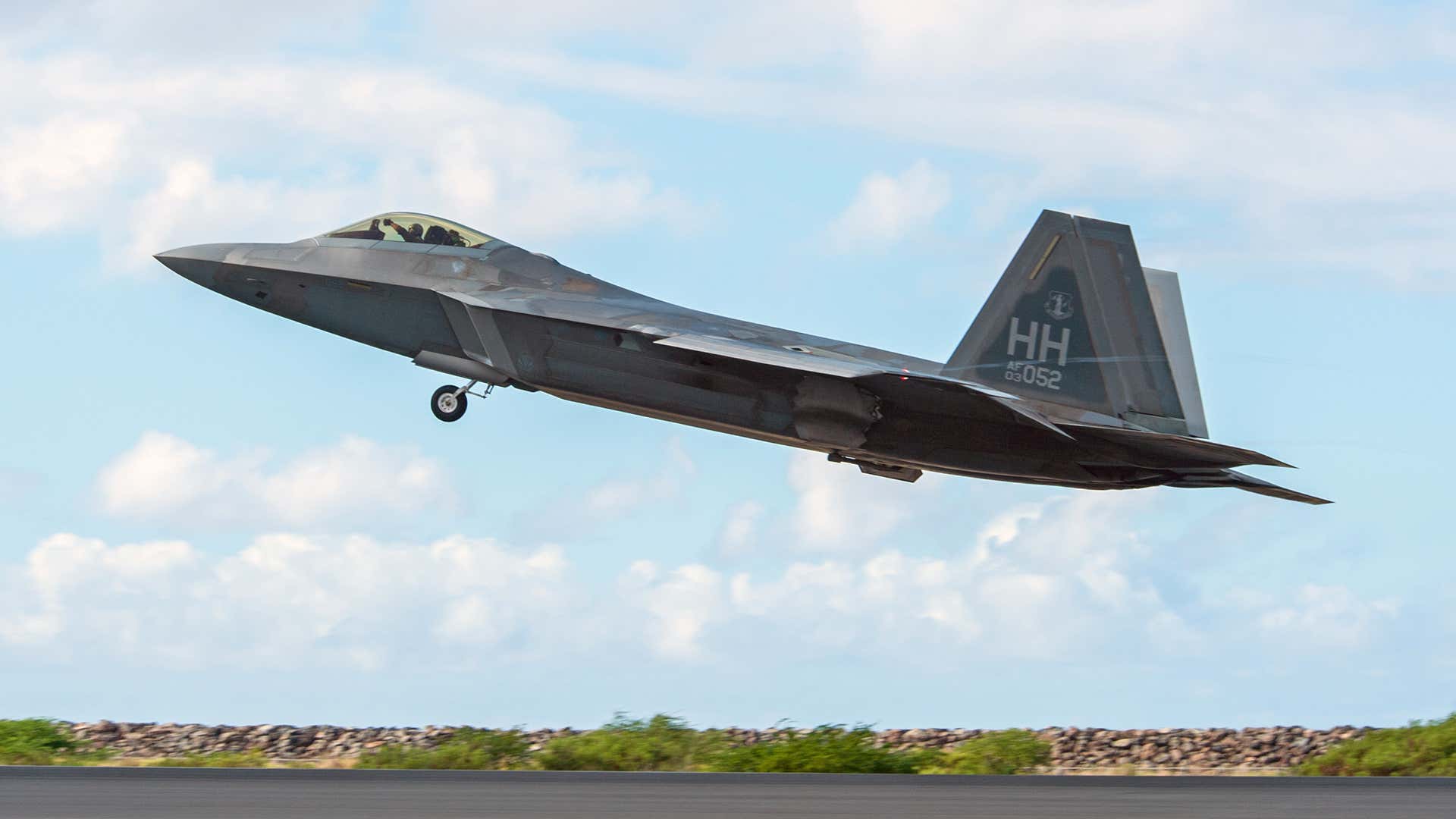Fighters were scrambled by Pacific Air Forces on Monday, February 14, in order to intercept an unmanned balloon floating off the coast of the Hawaiian island of Kauai. U.S. Pacific Air Forces (PACAF) has confirmed the incident but has not released additional details given that the incident is still being investigated.
The Adjudant General of Hawaii, the state’s top-ranking military officer, posted a statement to Twitter saying that “Indo-Pacific Command detected a high-altitude object floating in air in the vicinity of the Hawaiian Islands. In accordance with homeland defense procedures, Pacific Air Forces launched tactical aircraft to intercept and identify the object, visually confirming an unmanned balloon without observable identification markings.” It has not been officially confirmed what type of aircraft or how many were launched, but the only fighters based in Hawaii proper are F-22s. Those jets have the quick-reaction alert mission and are typically scrambled in response to aircraft in distress, unidentified aircraft and even vessels, hijackings, and potential adversary movements in the vicinity of the Hawaiian Islands. Local residents and officials have also stated that F-22 were the aircraft that went to check out the balloon.
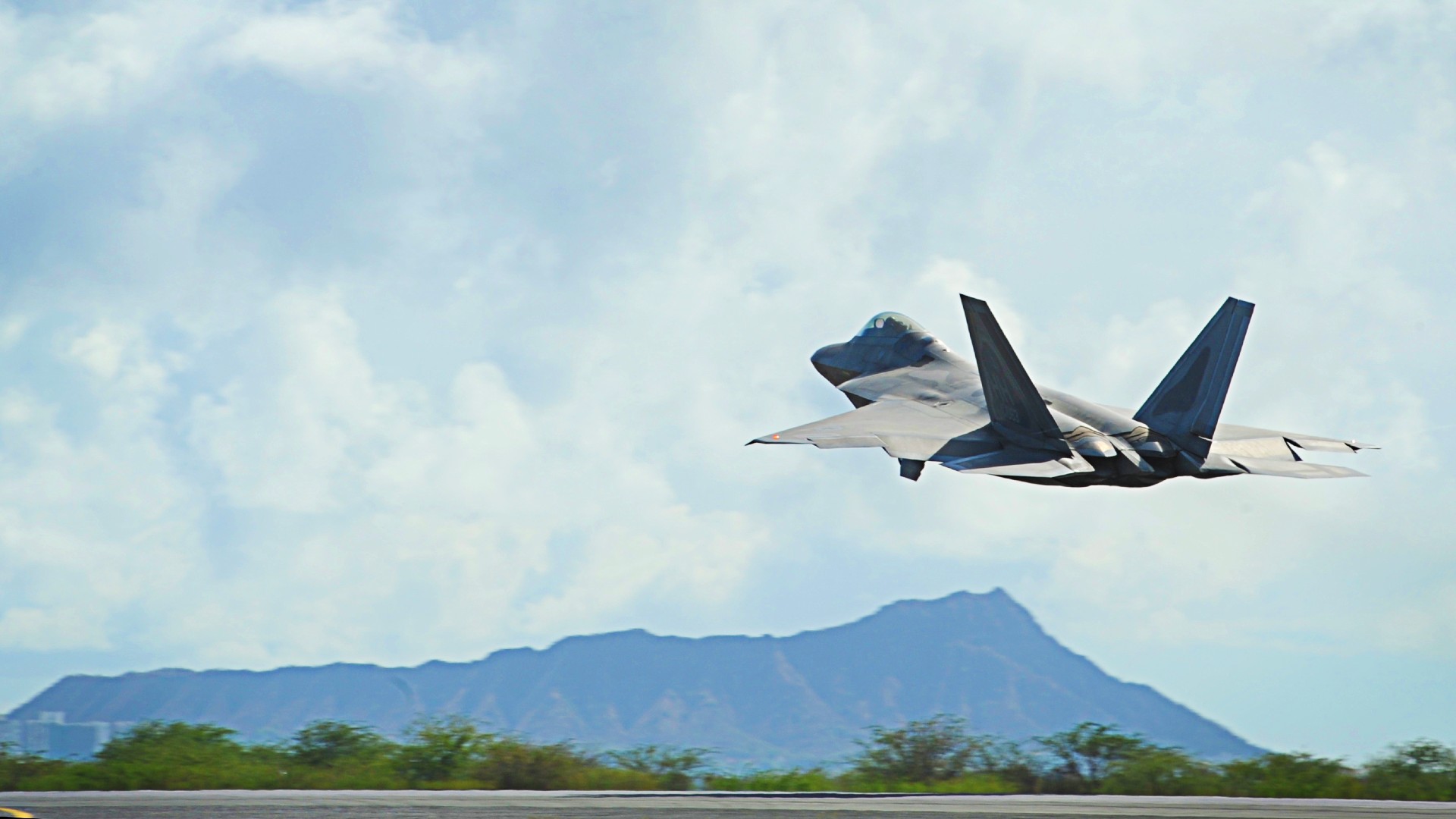
Kauai County Councilwoman Felicia Cowen told the Honolulu Star-Advertiser that she heard two booms, both loud enough to shake her house. “I would like to understand what were the powerful explosion sounds that were strong enough to shake my house in Kilauea, Kauai, and what looked like smoke in the sky. Was any object hit and did it explode? If so, what was it, and why?” However, an Air Force spokesperson told the paper on Thursday, February 17, that the “responding aircraft did not destroy the balloon.” The spokesperson continued that the service is “actively monitoring it via joint capabilities and it is under evaluation,” adding that “we don’t have anything else to provide at this time.”
Videos posted to the public Facebook group “Kauai Community” show what appears to be a stationary white oblong object in the sky with at least two contrails surrounding it. The accompanying caption states it was filmed from “Princeville Park.” That would seem to refer to a Prince Albert Park in Princeville, found along the northern coast of the island.
Some of the comments on the same post on the Kauai Community Facebook group underscore that the object appeared to remain stationary.
“Someone who works in aviation here on the island received communications that there were F22’s intercepting a UFO. UFO meaning an unidentified flying object to them. I wonder what the fighter pilots saw. It being a STATIONARY object,” one comment reads. “The aviation person told me that the UFO is many miles offshore from Princeville ( ?) over the ocean. It remained in one spot for at least 40 minutes.”
“I watched this from Lihue to Kapaa. Two jets flying around and around. And this just stationary not even close to the altitude the jets were,” reads another.
Raven Aerostar, a company that develops cutting-edge balloons that can remain relatively stationary for long periods and have an endurance exceeding 30 days, was operating a balloon to the southeast of Kauai, off Oahu, throughout the day on February 14 and in the week leading up to the event. This is the first time we have seen one of Raven Aerostar’s balloons near Hawaii.
The company works with the U.S. military to test balloons as sensor and communications relay platforms. You can read all about these advanced balloons that often get mistaken for UFOs in this past feature of ours on them. It’s unclear if those flights were related at all to the balloon that prompted the F-22 intercept, which appears to have been off the island chain’s northern-most main island, Kauai.
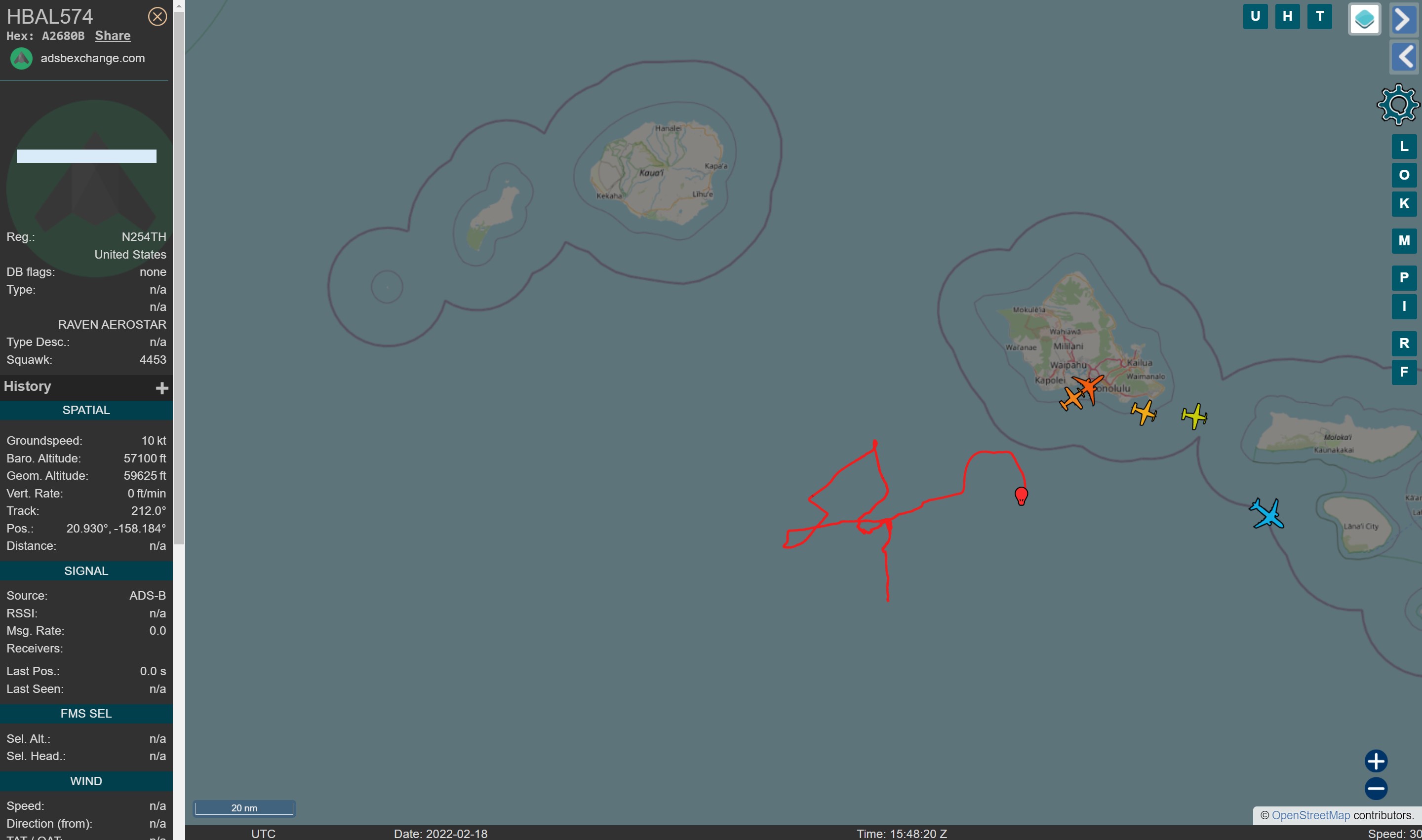
The Department of Energy (DOE) and Sandia National Laboratories operate a nearby rocket launch range, the Kauai Test Facility (KTF), at the west end of the island. The KTF is situated on the grounds of the larger Pacific Missile Range Facility (PMRF), which the U.S. military operates and also includes Barking Sands Airport.
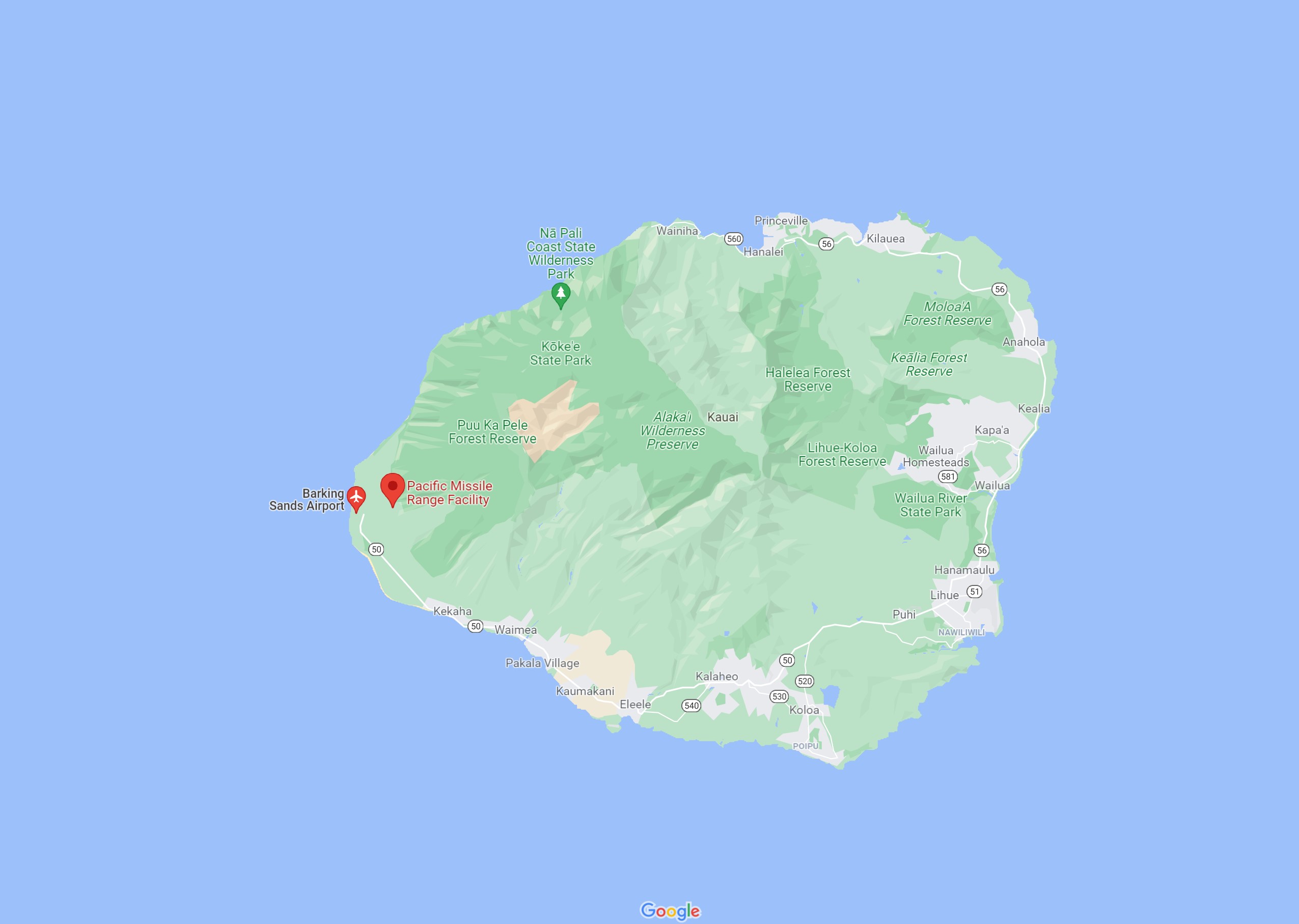
An image uploaded to Wikimedia Commons by the DOE in 2013 shows a white balloon being launched from this range. The accompanying caption states that these “weather balloons are equipped with reflectors and locators that allow scientists to track them until they expand and finally pop, at about 12,000 feet. Sandia scientists and technicians at KTF conduct rocket flight test experiments ranging from offensive and defensive weapons testing to atmospheric studies and high tech star gazing.”
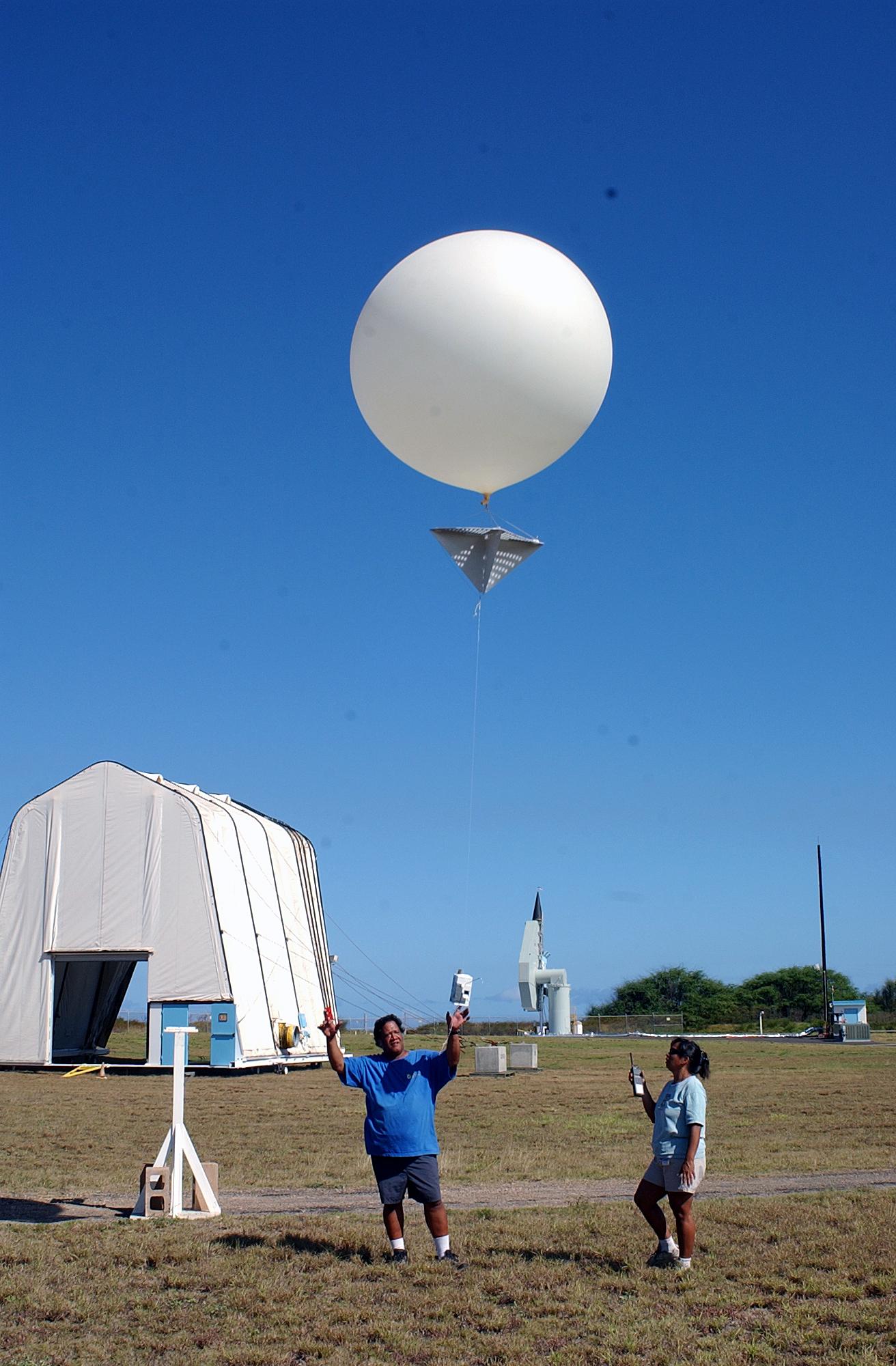
It isn’t clear if this could be a case of mistaken identity from a balloon released from the Kauai Test Range, but that seems somewhat unlikely. The balloon in question appears to be at a higher altitude than the weather balloons mentioned by the DOE. Still, another balloon of greater performance could have been deployed by the DOE or by another agency causing the mixup, but one would think that would have been explained by now.
Regardless, it points to a much larger issue concerning the use of balloons to collect critical intelligence. There is a deep history of balloons being used to collect intelligence, especially on radar and communications systems. We believe this is going on today in America’s critical training areas offshore of the U.S. mainland. This coincides with what is emerging to be a renaissance of sorts when it comes to militaries using balloons as platforms for sensors, communications relays, electronic warfare systems, and even to launch other craft or payloads.
As we mentioned earlier, the Pacific Missile Range’s primary installation is located at the northwestern end of Kauai. It is used for some of the U.S. military’s most sensitive and advanced testing, especially when it comes to missile defense trials. This includes hosting one of the latest ballistic missile defense radar systems and executing tests for the weapons like the MIM-104 Patriot and SM-6 and others. The Navy describes the range that the base is a part of as “the world’s largest instrumented multi-environmental range capable of supporting surface, subsurface, air, and space operations simultaneously.” Such an installation would certainly be of extreme interest to America’s peer-state adversaries and the presence of a mysterious balloon nearby would provoke a higher response from the military given the critical systems located there as well as the sensitive electromagnetic waveforms some of them emit.
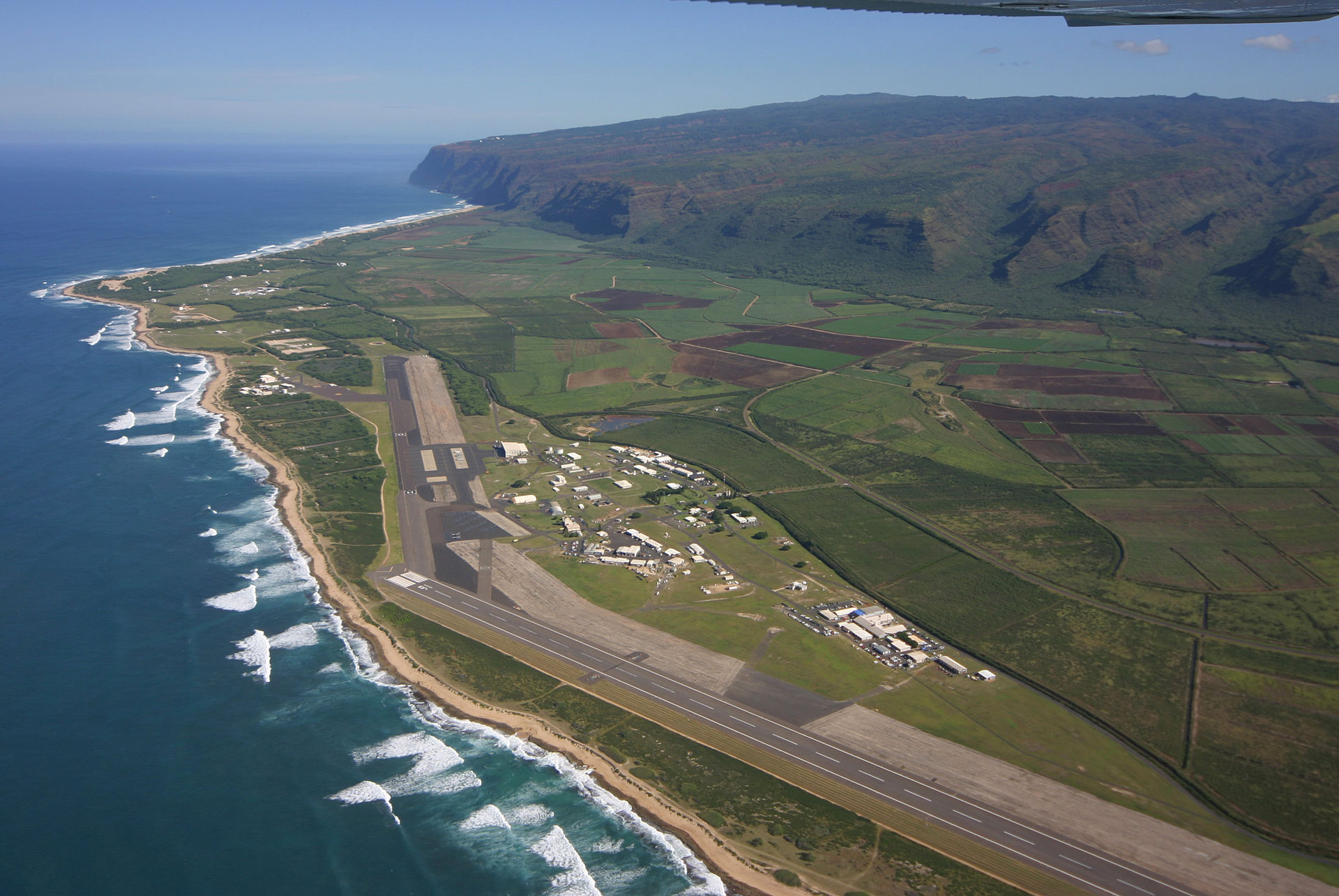
It’s also worth noting that normally, F-22s aren’t scrambled to intercept weather balloons or other high-flying lighter-than-air craft. The suspicious location of this balloon likely played a factor in the scramble. Another variable that would be interesting to know is what, if any, naval exercises are going on nearby and if there were any tests planned or ongoing at the installation when the balloon showed up. Foreign naval traffic nearby would also be of great interest.
Of course, it’s possible that there could be another explanation for all this. The F-22 alert pilots have handheld cameras they would have used to collect intelligence on the exact configuration of the balloon, including its payload. We have reached out to U.S. Navy’s Pacific Fleet, the Federal Aviation Administration (FAA), and the Pacific Air Forces (PACAF) for confirmation. We received a reply from the FAA stating “We don’t have any reports at this time. If that changes, we’ll get back to you.”
We will keep you updated as we get more information.
UPDATE:
Our friend @aircraftspots has provided some additional information on the F-22 scramble. The Raptors scrambled out of Honolulu as PRIMO1 and PRIMO2 at about 3:45 PM local time and headed off to the northwest. They actually popped up on Flightradar24, which is really rare (see below). As you can see, one of them was at over 41,000 feet and descending after investigating the contact north of Kauai. You can see the alert KC-135 at 25,025 feet nearby.
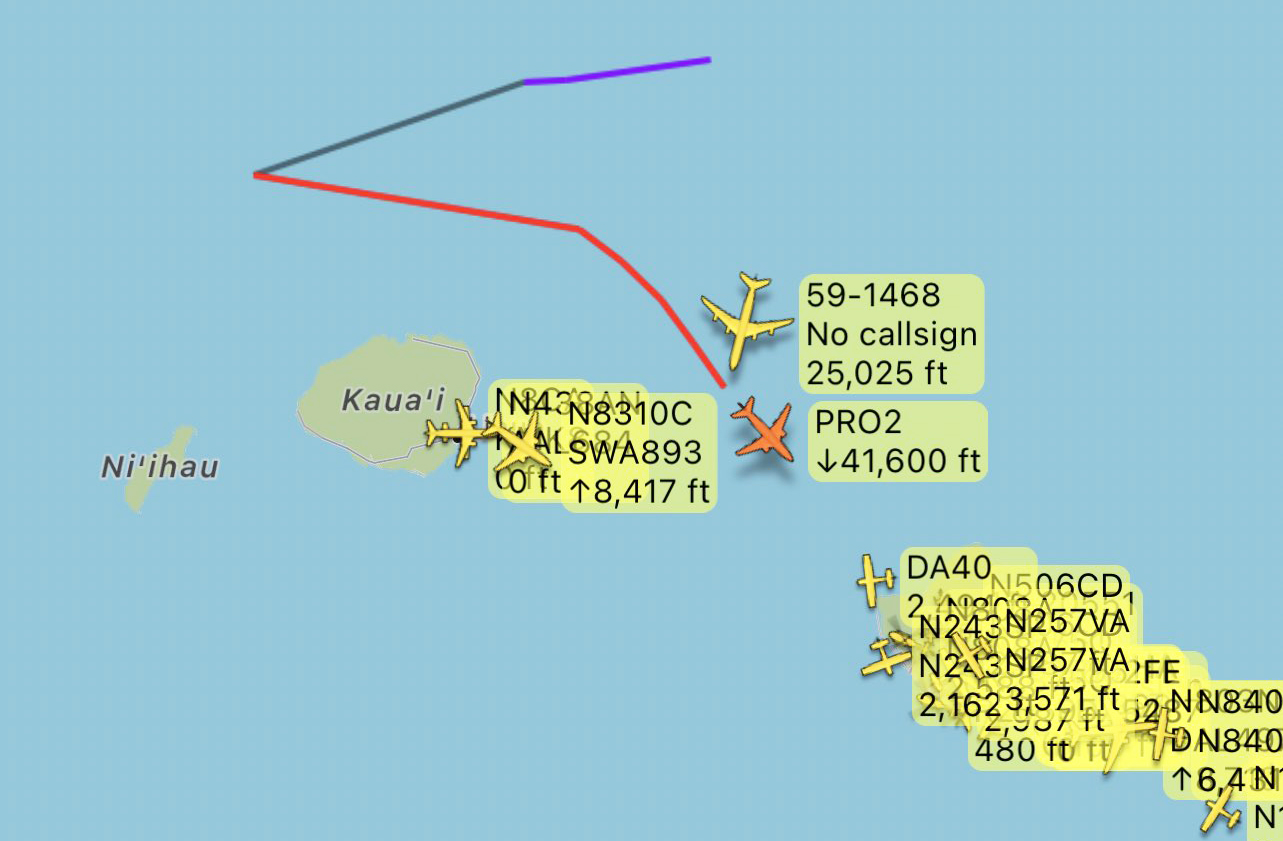
In addition, air traffic control audio has Air Canada flight 519 spotting the balloon on approach to Honolulu. We do not know if this was the Raven Aerostar balloon to the west of Oahu or this unidentified balloon north of Kauai.
A spokesperson for U.S. Pacific Fleet told us they did not have anything to add at this time in response to queries about this balloon incident and could not speak to the Navy’s involvement in the response. They advised reaching out to Pacific Air Forces regarding these queries.
UPDATE:
@aircraftspots came up with a nice track of the F-22 scramble mission:
Contact the author: Brett@TheDrive.com and Tyler@TheDrive.com
